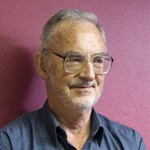Katharine Betts
This article originally appeared in The Herald Sun, 10 May 2018
For more than 10 years Australia’s population has been growing fast, mainly through immigration, and most of the new arrivals have found their way into Sydney or Melbourne.
As these cities buckle under the weight of numbers voters are shifting from discontent to anger. They resent crush-loaded trains, jammed roads, clogged schools and hospitals, outrageously expensive housing, and an eroding natural environment.
Despite stressed infrastructure and growing evidence of voter resistance both Coalition and Labor maintain their bipartisan commitment to even more years of high migration.
In 2016 the Australian Election Study (AES) found that 42 per cent of voters wanted immigration to be reduced. By August 2017 The Australian Population Research Institute (TAPRI) found that 54 per cent wanted lower immigration (and at an April 2018 Essential poll this had risen to 64 per cent).
Why do political elites continue to ignore voters’ unhappiness?
One answer is that politicians ignore voters because they can. They believe that voters have nowhere else to go, except for minor parties such as Sustainable Australia or One Nation.
The 2016 AES Candidates study provides evidence for elite indifference. Sixty per cent of election candidates wanted even higher immigration, including 67 per cent of Labor candidates. (Labor candidates were much closer to Greens candidates and Greens voters than to their own supporters.) An elite indifference driven by special interests leaves voters sidelined.
But there is a second answer to the question of why voters are ignored. Taking their concerns seriously risks breaking a rule stronger than politeness. It risks courting immorality.
This makes the division of opinion between political elites and voters more comprehensible. It stems from elite origins in the growing class of university graduates, a class imbued with progressive values.
A clear majority of professionals working in the media want even higher immigration, as do 49 per cent of university academics and teachers. Politicians and professionals are drawn from a similar pool of graduates, many of whom embrace progressive values including enthusiasm for cosmopolitanism, globalism, diversity and social justice.
Within this world view scepticism about high migration easily equates to racism. For example, Greg Jericho writes in the Guardian Australia that ‘because there are many desperate to hate – [the subject of immigration] must be treated with extreme care by politicians and journalists’ (24/2/18).
If scepticism about immigration is fueled by racist hatred, voters asking for reductions should not be taken seriously; their pleas are nothing more than poorly sublimated racism.
Beliefs of this kind have been held in elevated circles for some time. Politicians and their close associates are aware of them, and many share them. An in-group culture remote from the average voter, attention from well-heeled lobbyists, and a co-dependent relationship with media elites all contribute to creating an insider class. On the immigration question they live in a world remote from that of most Australians.
The TAPRI survey confirms that many progressives think that immigration sceptics are in fact racist. It also found that 65 per cent of voters know that this belief is widely held and that nearly half are inhibited by it.
The survey also found that, while many graduates can be termed ‘guardians against racism’, many other graduates feel threatened. They fear the slur. Because of this they are reluctant to speak their minds. After all they were likely to be working with other graduates imbued with progressive beliefs, and may even value such people as friends. Saying openly that immigration is too high puts them at risk of public shaming as well as exclusion from social groups that they care about.
TAPRI’s findings and those of the AES show that voters who are not university graduates are much more concerned about high migration than are graduates. Those who are the most concerned are non-graduate business managers, closely followed by a broad group of technicians, tradespeople, machinery operators, drivers and labourers. These non-graduates are less likely to fear ostracism but are also less likely to be in positions of influence. They can however say what they think in anonymous surveys such as those run by the AES, TAPRI and Essential Research.
They can also make their dissatisfaction felt at the ballot box. This, of course, is provided that there is at least one mainstream party courageous enough to stand against progressive opinion and the vested interests of the business lobby.
Taking a strong stand against racism is a core principle of progressive identity. And rightly so. The problem lies in the ill-informed reflex that is too quick to equate any discontent with high migration to racism.
This reflex helps to silence critics. It also gives the business lobby a free pass to enjoy the benefits its narrow constituency gains from population growth. As property developers bank their profits they can claim to be on the side of virtue or, if that is too far a stretch, they can safely deplore any opponents as xenophobes.
Katharine Betts is deputy head of The Australian Population Research Institute and author of ‘Immigration and public opinion in Australia: how public concerns about high migration are suppressed’, released this week on tapri.org.au.

